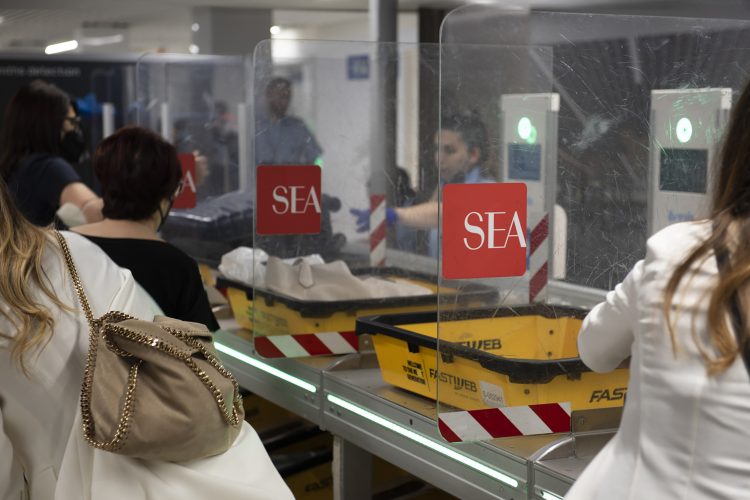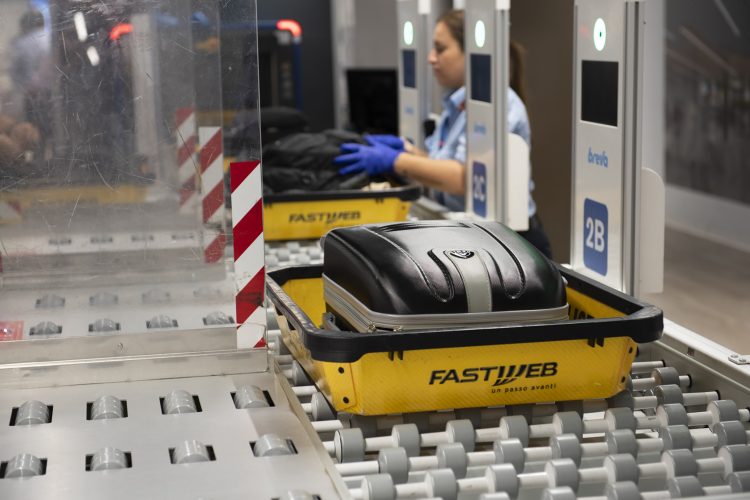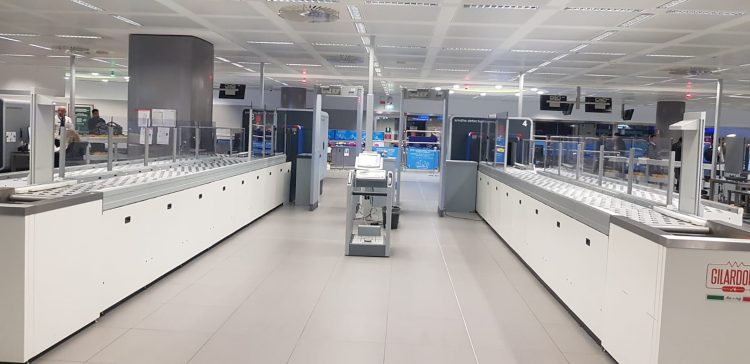A smoother journey for your hand baggage at Milan Linate Airport
- Like
- Digg
- Del
- Tumblr
- VKontakte
- Buffer
- Love This
- Odnoklassniki
- Meneame
- Blogger
- Amazon
- Yahoo Mail
- Gmail
- AOL
- Newsvine
- HackerNews
- Evernote
- MySpace
- Mail.ru
- Viadeo
- Line
- Comments
- Yummly
- SMS
- Viber
- Telegram
- Subscribe
- Skype
- Facebook Messenger
- Kakao
- LiveJournal
- Yammer
- Edgar
- Fintel
- Mix
- Instapaper
- Copy Link
Posted: 15 April 2024 | Armando Brunini, Holly Miles | No comments yet
Armando Brunini, CEO of SEA Milan Airports, spoke to International Airport Review’s Holly Miles about Milan Linate Airport’s (LIN) new state-of-the-art explosive detection systems for cabin baggage machines installed for hand baggage screening and how it has improved the experience for passengers.


Credit: SEA Milan
HM: Milano Linate Airport was the first airport in Europe to equip itself with this new, innovative technology for hand baggage screening. Tell us about the effect of implementing this technology has had.
AB: This technology is already compulsory for the baggage that is loaded onto the aircraft, so it is just about bringing it to the passenger security checkpoint. We have had this technology now for over two years (since June 2021) so we now have hard data and facts that has shown that the CAPEX investment was well worth it. It was good for the customer, but also good for the productivity of the airport. Milan Malpensa Airport (MXP) is also fully equipped with this technology, which means that any passenger who is departing from Linate or Malpensa Terminal One does not need to take out liquids or laptops. We all know personally how much that is a hassle for all of us when we travel.
HM: Can you share the data with us?
AB: In Linate we halved waiting times, so 90% of our passengers in February 2023 in Linate took less than five minutes to pass security, which is half of the average with the old technology. We used to process 125 passengers per hour as an average, and it’s now moved to 200 at least, and when we are at peak traffic, we can push productivity and it can go to 250. So really another level of productivity, which has an impact also on the payback of this investment which pays back in just a few years.
How has passenger perception of the baggage screening process changed since you implemented this technology?
We measure perceived quality. We have specific data on all elements and all the phases of the experience of the passenger in the terminal, and there’s a lot on security, which is one of the pain points. One of the reasons for which we decided to reinvest in this technology was because we were not satisfied with the score we used to have on security. It was one of the lowest scores we had compared to other phases of the experience of the passenger at the terminal. We use the ACI ASQ methodology, and the score was 3.5 out of 5 on average and it has now jumped to 4.3. So again, it’s hard facts, it’s had a big impact. But then it’s also anecdotal; I travel a lot mainly for business, but also for leisure, and sometimes some people in other airports recognise me. Recently, a Security Officer said: “Some of the passengers that we are processing here are asking why we do not use the same machines that you are using in Linate?”
Other airports are beginning to test it, we know that in the UK, there’s a legislation which will make this technology compulsory from June 2024. So as time goes forward, this technology will become more common. But right now, because it’s not standard around the world there is an efficiency drain when inform passengers that they don’t need to take out computers and liquids . The full potential of this technology is not yet realised as passenger behaviour and knowledge has not caught up with this new efficient standard of travel.


Milano Linate Airport security checkpoint where passengers no longer need to remove liquids and electrical items from their hand baggage. Credit: SEA Milan.
How did this technology help you manage your manpower with security?
This technology saved our lives last summer. In Italy we had problems, but of course, not as bad as other European hubs, but nevertheless, it was very stressful in those months, and a lot of stress was on security because we did find it difficult to restaff at the level we had before. So yes, queues were longer than what they are today, but we never had any disruption, and that was because we were able to manage volumes very similar last summer to the volumes of pre-COVID with less staff thanks to this technology. In Linate it was already fully implemented, and in Malpensa we were more than halfway through with half of the machines already with this technology, so really, it saved our lives. If we didn’t have those, we would’ve had some of the queues outside the terminal, which never happened. It was very important for us.
How does this investment fit in with your wider passenger experience strategy and also the experience of your employees?
It’s a very important component. We are working towards a seamless travel experience, and the hurdles are the various new safety or security regulations, so there’s always new checkpoint, a new control or new regulation, and we must reconcile this with seamless travel. As we know, security is one of the most stressful touchpoints for passengers, so when we refurbished Linate security area, we used neuroscience architects and experts to redesign that area to make it less stressful for passengers.
Issue
Related topics
Baggage handling, New technologies, Passenger experience and seamless travel, Safety, Security, Workforce



















